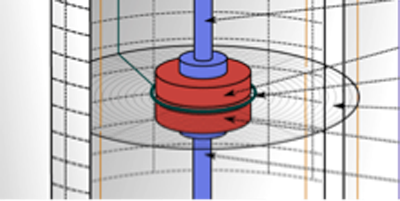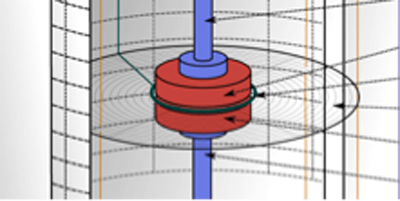Particle Physics with Ferroelectrics
If the electron’s charge distribution were found to deviate from perfect spherical symmetry (i.e., that it has an intrinsic electric dipole moment) this could potentially signal new physics beyond the standard model of particle physics. So far, the most sensitive experiments have studied the electrons of atoms or molecules in a beam, but an alternative is to study the much denser supply of electrons bound to atoms in a solid, with a corresponding increase in signal. As reported in Physical Review Letters, solid-state searches for the electron electric dipole moment (EDM) are still times less sensitive than atomic physics approaches, but they have improved threefold in only a year.
The electron’s EDM must be collinear with its spin. Solid-state EDM searches, therefore, typically apply an electric field to a sample and try to measure the induced magnetic signal. Stephen Eckel and colleagues at Yale University in Connecticut perform such an experiment with , a ceramic with a high density of unpaired, unordered spins, and a sizable ferroelectric response. This means that an external electric field creates an even larger internal electric field for the spins. The authors place a sensitive magnetic pickup loop between two -mm-diameter, 1.7-mm-thick disks of and apply a series of short electric field pulses to modulate the signal from the EDM and cancel out stray fields.
Eckel et al. conclude that if the EDM is nonzero, it cannot be greater than x . Compared with the best limit of x from atomic beam measurements, it may seem like a losing battle to continue with a solid-state approach, but the prospect of new materials and lower noise measurements motivates continued research. – Jessica Thomas





